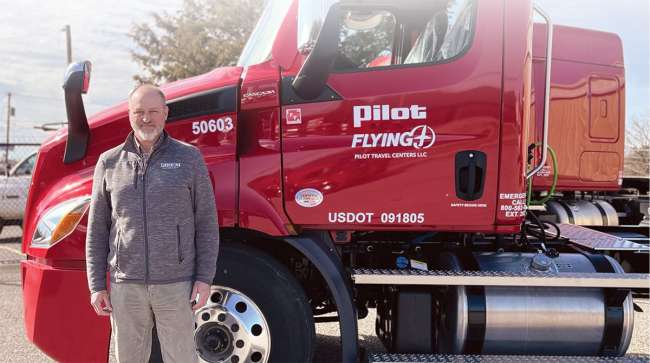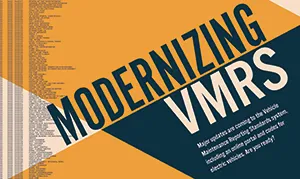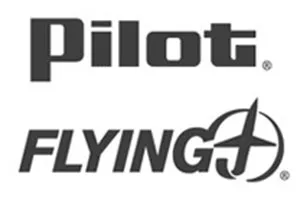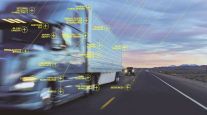Five Questions: Craig Provonsha

[Find the latest in equipment & maintenance: Explore this quarter's issue of Calibrate]
Craig Provonsha, fleet maintenance manager with Pilot Flying J, oversees all operations of the company’s transportation fleet to ensure cost effectiveness, safety and regulatory compliance. The major truck stop chain has been proactive in keeping abreast of the many advances in diagnostics and predictive maintenance technology. Here’s a summary of what Provonsha is expecting for the equipment and maintenance segment in the new year.
How are you planning to manage maintenance costs amid potential economic uncertainties in 2024? Are there cost-saving strategies or innovative approaches being explored?
The supply chain issues of 2020 and 2021 taught us that “perfect world” replacement schedules cannot be relied upon in turbulent times. During those years, we were forced to run many of our trucks longer than planned, due to the inability of the truck manufacturers to meet order demand for new trucks. As our trucks hit much higher mileage and age than we were used to, we experienced more major failures and expensive repairs. At the same time, parts prices increased 51% over those two years and labor rates skyrocketed.
As the supply chain recovered in 2022 and 2023, we ordered roughly double our normal truck order both years to refresh our fleet as much as possible. To hedge against another possible supply interruption, we invested in adding extended major component warranties on the newer trucks in the fleet (beyond the four-year/500,000-mile warranties we purchased initially). Due to the nature of our business, which is mostly supporting our own travel centers, our fleet is very spread out so we don’t really have hubs or our own shops to help control maintenance and repair costs. Therefore, we negotiate with and utilize our outside vendor partners to help maximize our savings and keep our fleet on the road with parts and labor discounts. We’ve also found that rigid discipline in keeping to our preventative maintenance schedules significantly reduces the number of catastrophic failures.
More Q1 Calibrate

►VMRS Portal Is Nearly Here
►Freeze: Our Electric Future: You Don't Have to See It to Believe It
►Five Questions: Craig Provonsha
►Industry Needs Agreement on Future of Trailer Connections
►Baxter: Driver Support Is Key to Electric Powertrain Adoption
Explore the Issue!
How do you see emerging technologies, such as telematics and the Internet of Things, influencing equipment maintenance in the trucking industry? What advancements in vehicle diagnostics and predictive maintenance tools do you anticipate adopting?
We place a high value on telematics and vehicle diagnostics tools. We were early adopters of this technology in our tractors and currently use it in our trailers, as well. This technology incorporates telematics data available for tractors to the trailer, as well. Some of the key benefits we’ve received from this setup have included tire pressure monitoring; auto-inflate/deflate of each tire; hub temperature; weight of load on each axle; video monitoring of the sides, rear and load head area, as well as detection of lights out; ABS faults; and harmonic vibration at the hubs (which can indicate a possible bearing failure). Our fleet uses telematics in the tractors and syncs that data with our maintenance software to give our fleet maintenance coordinators a wealth of information at their fingertips when making decisions during breakdowns or scheduling maintenance with our operations in the field.
We have seen that this kind of technology has helped to predict failures before they happen and has prolonged tire life. It has reduced towing charges, road call charges and helped us maximize payload, without exceeding legal limits.
With potential changes in regulations, how are you preparing fleet compliance, especially in terms of emission standards and safety requirements, and the impact on equipment maintenance?
We have been monitoring the U.S. Environmental Protection Agency and California Air Resources Board regulations and meet regularly with truck and engine suppliers to ensure we are ordering the equipment we need to remain compliant with all future requirements, as we know them today. We have ordered CARB-compliant engines for units that will be used in California and other states that are likely to adopt similar requirements. Our team is actively rotating equipment that will no longer be CARB-compliant in those areas to other parts of the country until they are scheduled to be replaced. We have ordered both BEVs and hydrogen fuel cell-powered tractors for certain markets and are already preparing our travel centers for alternative fuel-powered vehicles. Pilot will be part of the alternative fuel infrastructure and, as such, we are partnering with General Motors to install charging stations at our travel centers and are already hauling both gaseous and liquid hydrogen for customers in select markets.

As the industry becomes more connected, what measures are being taken to ensure the cybersecurity of maintenance systems and data? How do you see the role of data analytics in optimizing maintenance processes?
We work with our supplier partners to ensure cybersecurity for the data being transmitted over the air, and Pilot’s information security group has been very forward-looking in establishing policies and procedures to secure our collected data and determine how we handle emerging technologies like artificial intelligence. Our maintenance group gets very granular with the data we collect, which helps to strengthen our negotiations with our supplier partners for parts pricing and custom warranties. This also allows us to identify trends and common failures, and has helped us improve our ordering specifications.
How do you foresee collaboration with original equipment manufacturers and suppliers evolving to meet the changing needs of the trucking industry?
At Pilot, we always strive to work in coordination with our OEM suppliers. We have excellent relationships with the OEMs we purchase from and the data we can provide them about our equipment and how it performs has been beneficial for them, as well. In the race toward zero emissions, the OEMs are learning right along with us and the closer we work together, the more real-world data we can supply them, the better the equipment will meet our needs and remain compliant and safe. As a fuel-hauling fleet, safety and compliance are our top goals in keeping our travel centers supplied with fuel. Our purpose at Pilot is “showing people they matter at every turn” and that not only applies to our more than 13,000 trucking fleet customers, but also to the OEMs we partner with to make sure our equipment is built and maintained to help us keep our travel centers well supplied and ready to serve.
Want more news? Listen to today's daily briefing below or go here for more info:




